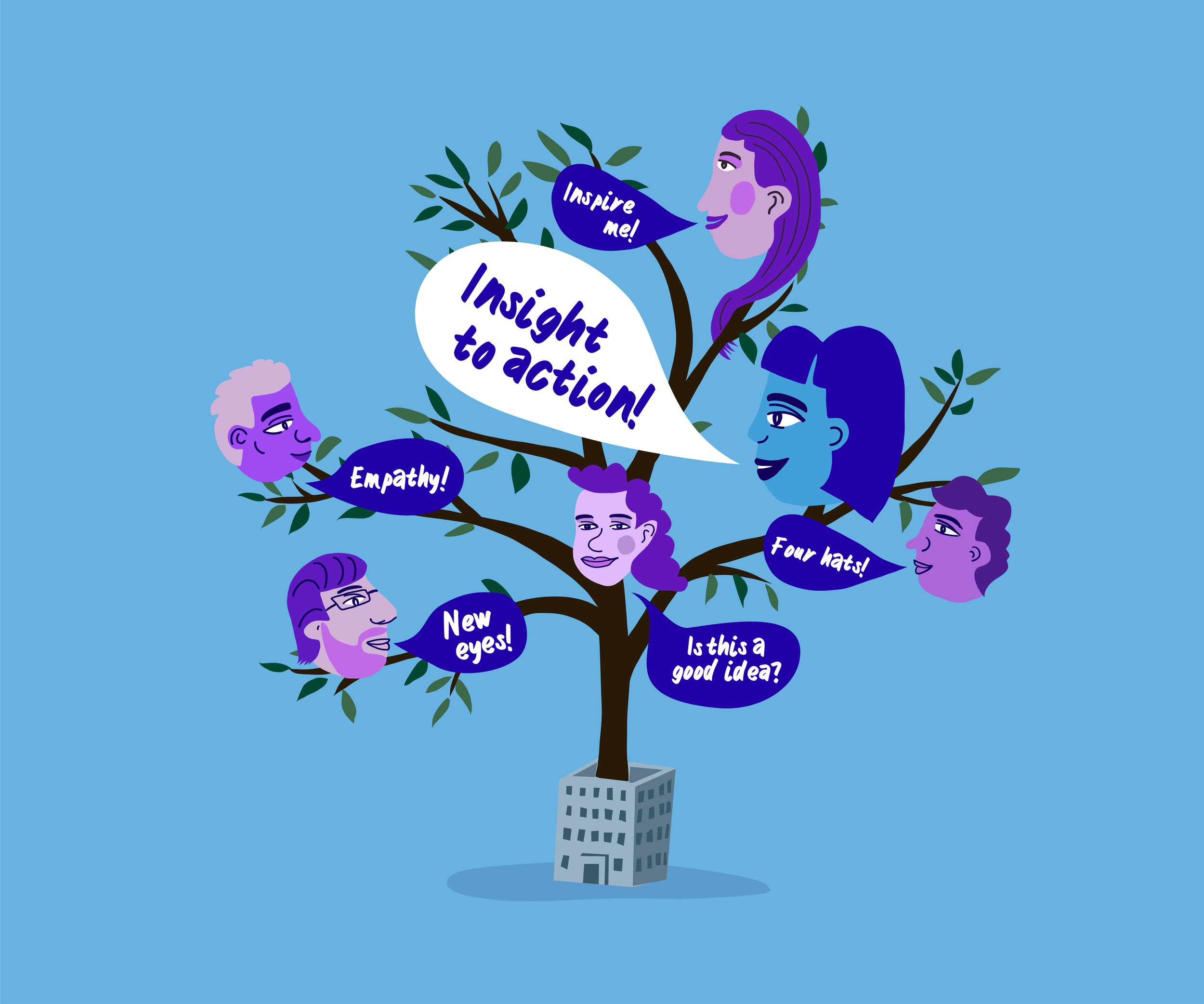6 - Insight to Action
By Kate DowlerWhen it comes to delivering design research, how do you engage your audience and key stakeholders to make sure it’s interesting and actionable? How do you turn insight to action?
Over my years working within design research, I've been involved in delivering many different types of research project. Both as a consultant, and also in client-side roles where others have been presenting back the findings from user or consumer research.
One of the biggest challenges with delivering this type of work is how to engage the audience and key stakeholders to make sure it’s not only interesting, but also actionable.
This article looks at some of the big challenges with delivering design research, and some learnings for how to make it work. We’ll be looking at how to engage your audience, how to help them take action, and how to ensure the work has impact.
Challenge 1: Engagement
When running design research, your first challenge is to ensure that the client’s project team and key stakeholders are engaged in the research activity and the outputs. If they’re not actively engaged with the right mindset then it’s unlikely the findings will be acted on.
In an ideal world, getting the client project team and stakeholders involved early helps to build engagement and openness, making people more receptive to the research activity and findings (avoiding the “not invented here” syndrome). This could be during a kick-off session to define the key objectives, or by shadowing/observing some of the research sessions. For time-poor clients, sharing high impact project updates such as visual “Project Postcards” or video vox pops can also help to build stakeholder interest in the research and a desire to see the final project outcomes.
Ensuring engagement during the final debrief session itself is also critical, especially if client involvement up to this point has been low. One of the key tips here is to try and get your audience into an “active” rather than “passive” mode as they take on board the research findings and recommendations. If they’re just sitting back and listening, it’s likely a lot of the content will wash over them. Ideally, you want your audience to be actively listening and building on the findings. Changing the debrief session from a presentation to a workshop-style format really helps here, translating insights directly into ideas and next steps, and ensuring the project team take ownership of these actions.
Challenge 2: Stickiness
Another challenge is making sure the findings are actually acted on. When the client project team take the big insights and design recommendations away after a debrief session, how do you make sure these “stick” within the business. As an external consultant, this can be particularly tricky to achieve as you don’t necessarily know the inner workings of the client’s business.
Keeping the strategic purpose of the research top of mind really helps here. It sounds obvious, but it’s easy during the analysis phase to get lost in the detailed findings from the research, to ensure that every last detail is shared and communicated. However, it’s usually more impactful to structure and curate the findings so they are highly targeted around the specific objectives that clients have. Also, to show how these insights translate into specific ideas and opportunities for the business that can be acted on.
Another thing that really helps with stickiness is thinking about how the research activity links, or can link with existing frameworks or ways of thinking that already exist within an organisation. For example, internal customer experience maps, segmentation models, brand frameworks etc. This immediately makes the findings more “sticky” as you have embedded them, or shown how they link to a commonly used model within the organisation.
Challenge 3: Impact
Having clear insights and design recommendations is one thing, but influencing internally within the business to drive action forward can be a challenge. This is often the remit of the client project team, as they try to communicate the findings from research to business stakeholders who have not been involved in the research activity.
In our work, we focus on the innovators within business, helping them translate insight into ideas. We see the output from research work as a transition point rather than an end point, and always design research outputs with the next steps in mind. We spend time creating highly shareable assets that can be used by client project teams to drive opportunities and ideas forward and ensure the research findings remain “alive” within the organisation. For example…
Curated audio or video clips to quickly communicate key topics, personas or opportunity areas.
Digital desktop apps containing all of the content from the project, providing a highly visual and engaging toolbox for the project team to use to influence and communicate internally.
Mini workshop kits containing the big insights from the research together with some short self-facilitated creative exercises, allowing different teams to make use of, or be inspired by the insights.
From Insight to Action
In summary, as a design researcher, it’s easy to get caught up in the details of the research activity, and not pay enough attention to how the research findings and recommendations will actually get used and have impact within the organisation - particularly if you’re an external consultant and not involved in the client’s day-to-day business.
It’s important think about how to Engage the client project team and stakeholders, how to add Stickiness to your research findings, and how to help internal teams take action and ensure the research has Impact. And don’t leave these considerations until the end of the project, plan them in from the start.
For more details on how we help clients ensure that design research has impact, contact Kate@industryofus.com

